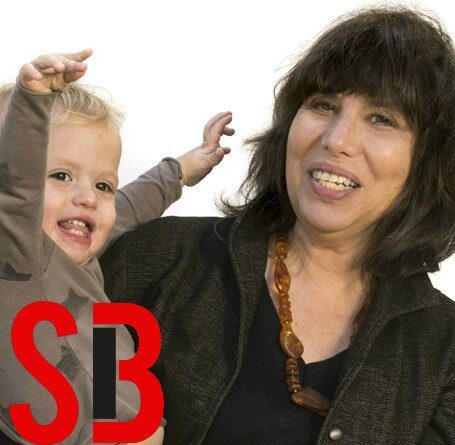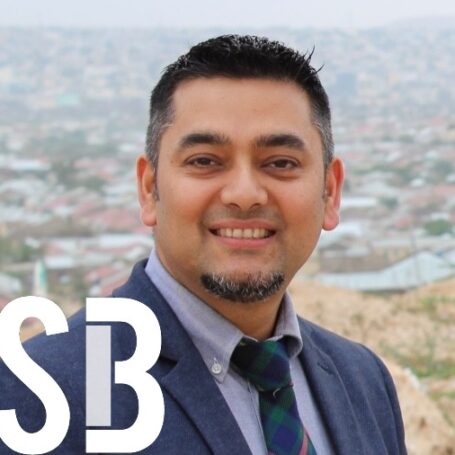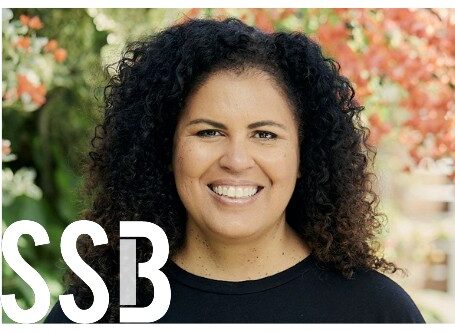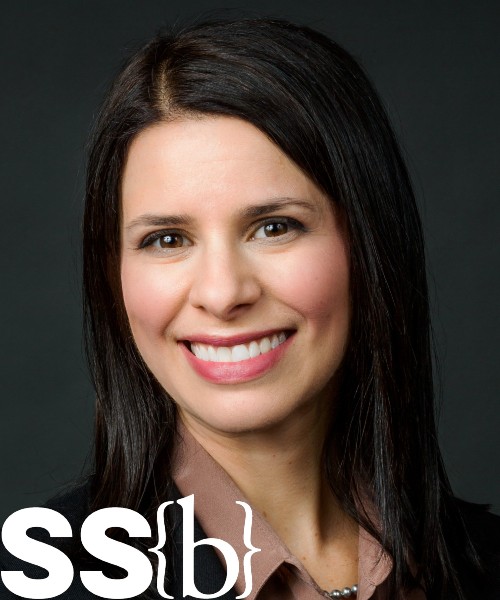Robin Dunbar on Dunbar Numbers
How many close friends do you have? How many friends, more loosely defined, do you have? How many acquaintances do you have? How many other people can you remember?
According to Robin Dunbar of Oxford University, most people are likely to give similar answers to these questions, and that has important implications for how humans should arrange their organizations and institutions.
Click HERE to download a PDF transcript of this conversation. The full text also appears below.
To directly download this podcast, right click HERE and “Save Link As.”
Social Science Bites is made in association with SAGE. For a complete listing of past Social Science Bites podcasts, click here.
***
David Edmonds: How many close friends do you have? How many friends, more loosely defined, do you have? How many acquaintances do you have? How many other people can you remember? According to Robin Dunbar, of Oxford University, most people are likely to give similar answers to these questions, and that has important implications for how humans should arrange their organizations and institution
Nigel Warburton: Robin Dunbar, welcome to Social Science Bites.
Robin Dunbar: Good to have you here
Nigel Warburton: The topic we’re going to focus on is Dunbar numbers. It’s unusual to have a number named after you, what is a Dunbar number?
Robin Dunbar: Well, essentially it’s the number of people that you can have a meaningful relationship with, that’s really a limit imposed on that number by your ability to handle relationships, in effect.
Nigel Warburton: We’re not talking serially here, are we?
Friendships decay when you don’t see people, and they decay quite fast. And what things like Facebook seem to do is just slow down the rate of decay.
Robin Dunbar: No, no. Basically, it’s the number of juggling balls you can keep in the air at the same time. Actually, it extends out to really all the people whom you have, if you like, some kind of historical relationship with: so you may not have seen them, necessarily, recently. But those would be your inner core, the ones you see regularly week by week. But if you include all the people that you might send Christmas cards to, for example, or might see or make an effort to contact, let’s say, at least once a year, it comes around about 150 people.
Nigel Warburton: Are you suggesting there’s something universal here?
Robin Dunbar: Yes, as far as we can see, this is very universal, we don’t so much know about personal social networks, as it were, because the data we have is basically European, but there’s lots of data on organisation sizes in traditional human societies which points at the same number. So if you look, for example, at community size, extended community size in human hunter-gatherers, so these dispersed communities obviously covering a very large territory, but still that number typically comes up to be about 150, if you look at the average village size in England and Wales in the Domesday Book, according to the historians, that county by county, the average is about 150 again.
Nigel Warburton: Obviously it’s not by chance that that 150 number has been hit upon. What’s going on there?
Robin Dunbar: Well, it’s really a function of the fact that… in the course of later human evolution, so this number seems to have been fixed pretty much within our species as a whole, so we’re talking about the last couple of hundred thousand years. There seem to be two major possibilities: one is it’s defense against the guys over the hill, so this is the raiding neighbors problem. You’re into a sort of arms race, as it were, in historical terms; if you’re too small you get swamped and beaten up, and so on. So you have this pressure to produce group sizes as large as you can. The other possibility is it’s about trading relationships, particularly at high latitudes where things are much more unstable climatically, and therefore food-wise: it’s good to have an extended trading network, so you can go and knock on the door of the guys three valleys along and say, ‘can we come and camp with you for a bit, because remember, ten years ago, we let you come and camp with us’. So having those extended trading networks seems to have been very important in the course of later human evolution.
Nigel Warburton: But in both those cases, it seems that a much larger number would be better?
Robin Dunbar: OK, and here you get the other side of the constraint, namely, it costs brainpower to manage groups of this size. Yes, in principle, the bigger the grouping you can get, the better of you’re going to be, whichever of those explanations is right, but to support those groups you need a comparably bigger brain, and that’s very costly. And it turns out that at the level of the individual, the number of friends you have correlates with the size of particular bits of your brain, particularly stuff at the front here over the eyes. The Dunbar Number applies not only between species where it originally came from, but it actually also applies within species, between individuals.
Nigel Warburton: Are you suggesting that for an individual that the larger brain allows them to have a larger group of friends, or that dealing with the friendships enlarge the brain?
Robin Dunbar: That’s actually a very interesting question, because it could be either. One has to suppose, given the fact that the original predicted value of 150 is off the back of a comparative cross-species relationship, that there’s some genetics buried in there somewhere determining the size of your brain. However, we also know that the brain is really quite plastic. Your experiences during development can have quite a significant effect on the development of particular bits of the brain. So we kind of think that actually your experiences in childhood, particularly the size of your sib-ship group (the number of sibs you have), or perhaps the number of peers you play with when you’re very young, really can lead to the development of slightly bigger brain than the average, and that’s what’s giving you the edge between individuals. So I’ve no doubt that some people just have slightly smaller brains than others, genetically, but there’s some leeway around that, and that leads to the quite large individual differences, so we talk about 150 as the being the number, but actually the number is somewhere probably between, let’s say 100 and 200.
If you look at individual variation, and we know what causes that, it’s essentially your ability to manage other people’s mind states, and that’s what is determined by the size of this bit of the brain. The hardware determines the software, the programming which is this mentalizing ability, and how good you are at mentalising determines the number of relationships you can manage and keep going, essentially, and what’s kind of interesting in this context is actually that the 150 is then an emergent property, because you’re not managing, necessarily, all those relationships: what you are managing is the inner core, and if you can get that right, that supports this sort of 150 as a kind of superstructure off the basis of that.
Nigel Warburton: You mentioned inter-species comparisons, but if you’re talking about mentalizing, there are relatively few animals that could plausibly be said to have a theory of mind, or to be able to think about how another member of their species is likely to react to them.
Robin Dunbar: Oh, that’s certainly true. The general assumption is that most animals are operating in what’s referred to as first order intentionality, so they understand their own mindset, they believe that something is the case. The great apes can probably do second order, which is formal theory of mind, as the philosophers recognize: that’s what five year-old children can do. Adults do much better than that: so the average for adults was, our data said anyway, is about fifth order. You’re handling four other people’s mind states essentially. It’s that capacity as to whether you’re sort of operating a third order, or fourth order, or fifth order, or sixth order as an individual in an everyday sense that seems to be critical in determining the number of more intimate circles of friendship that you can maintain, that then in turn, supports the whole superstructure. But the difference between fifth order and second order, where the great apes are, is exactly the difference between having groups of 150 in humans, and groups of 50 in chimpanzees.
Nigel Warburton: Assuming you are right, and the number is right, does anything follow from that? I mean, it’s interesting, we learn something about the humans species and the number of friends we can maintain, so what?
Robin Dunbar: Well, it has a lot of implications for organizations I suspect. The classic case of this would be the military. So all modern armies are structured along these lines, so this sort of layer of 150 general friends that you have, turns out to consist of a series of layers which are scaled very tightly with respect to each other: so each layer is three times bigger than the other; so you have an inner, inner core of intimate friends and relations, of about five, and then there’s the next layer out, it’s about 15. If you like to think of those as best friends, perhaps, they’re the people you might do most of your social Saturday evening barbeques with, and that of course, includes the five inside. And then this next layer out is 50 (you might think of those as good friends), and the 150, your friends. And then we know there are at least two more layers beyond that: one at 500 which you might think of as acquaintances, so again this is including everybody within the 150 as well; , finally, one at 1500 who are basically the number of faces you can put names to. But you see those numbers absolutely replicated beautifully across modern armies: that’s how they’re all structured, and they just carry on with the next series out, so 5000, 15000, 50000. So there seems to be something that works particularly effectively in terms of organization at these kind of numbers. Remember, these layers are about the intensity of the relationship, so we would think about that in terms of emotional closeness, but it probably has a lot to do with how well you understand how the other person ticks.
And therefore, if you want to have an organizational unit that involves very, very close working together, you cannot do it with a group of 150: you may have to have 15, because that’s the limit, at that level of intimacy, that people can work together. So you might think of all sorts of knock-on consequences, that instead of having schools of about 1500, as we do at the moment, perhaps they should be 150, and then they would be much more intimate.
Nigel Warburton: This is all fascinating. So if people believe you then there should be really quite radical implications for some organization, which are huge.
Robin Dunbar: Oh yes. I mean yes, I mean, having super-‐ministries as there was a fashion for at one time in the government. I think that must have been a disaster really. Think small.
Nigel Warburton: You’ve been arguing that organizations should be relatively small, up to 150 roughly. Is there any evidence that they function better at that size?
Robin Dunbar: There is quite a lot of casual evidence that groups of a certain size, not necessarily 150, because I don’t actually thing that anybody has necessarily looked at organizations of that size in this sort of way, but for example, this sort of 15 player grouping turns out to be extremely characteristic of lots of things, ranging from team sports, where the whole issue is having very close understanding of how the other football team, you’ve got to know when Jim kicks the ball that it’s going to be over this way, and not over that way, so as to get there ahead of it, so you’ve got to have this empathy that goes on between the players. And you see it in lots of other contexts: the size of juries why are they 12, which again is very close within the sort of range around the 15 layer? The size of almost all inner cabinets around the world is somewhere in the order of 12 to 15. People seem to settle out at these grouping layers quite naturally, according to the task they’re doing.
The reasons why we might want to think of units of 150 in terms of organizational structures is essentially the same reason that the military have locked onto, and they provide probably the best example of the larger scale unit. So the smallest unit that can stand on its own two feet in modern armies is the company which has a range in size of about 120 to 180 around the world — all modern armies fall within that span. And for companies the whole issue of it is it’s family, and people who have been in the military will tell you that. The company is your entire world, the battalion isn’t, they’re the guys you play needle matches against, so the other companies in the battalion, they’re much more needle matches, than, say, games against another branch of the military, for example. There’s something about the level of bonding and intimacy that occurs, with its limit at about 150, which seems to be really crucial to how well that functions on the ground, as it were.
And I think my kind of extrapolation from that is to say, well, you know, one might think in terms of schools having that kind of size, or at least being partitioned up into subunits that are semi-independent of that kind of size, because that’s the kind of size in which you feel you are part of a community, and that sense of belonging actually pulls you along, you don’t get left behind in a corner to fall through the cracks in the floorboard. It’s that sense of an extended family.
Nigel Warburton: So, we’ve now moved into an age where the Internet is important for most people’s lives, and we have connections we call ‘friends’ in some contexts. Those numbers can go a lot higher than 200 on people’s Facebook connections, or on their Twitter connections. Is it that we’re changing, or that those aren’t really manageable friendships?
Robin Dunbar: They don’t even exist. The average Facebook friends size is somewhere between 200 and 250. It’s a very skewed distribution, so indeed some people have 5000, because that’s what you’re allowed to have, but they’re very, very, very small number of people to do that, and they tend to be professional users anyway -- journalists using them as, Facebook as a sort of information source, as it were. For jobbing everyday users, you can see this huge peak of around about 200. So people have pretty much the same friends on Facebook as they have in everyday life, with a little slippage over into the next layer out. In fact, all you are doing when you add more friends is that Facebook prompts you to do, is a friend of a fried of a friend, so what you’re adding in is the acquaintances layer beyond that. What the technology does is something rather different, but still useful, or in other words, it allows you to keep up with friends who are physically distant or perhaps to meet people you wouldn’t normally have the chance to meet, but all our research suggests at the end of the day, you have to see the whites of the eyes, particularly with friends.
So friendships decay with time; family relationships don’t, they are reasonably stable. Friendships decay when you don’t see people, and they decay quite fast. And what things like Facebook seem to do is just slow down the rate of decay. But if you don’t at some point get together over a cup of coffee, and stare into each other’s eyes, my guess is, there’s nothing on Earth will stop that relationship eventually sort of bouncing down through the layers, and dropping off the 150.
Nigel Warburton: Now, you’ve obviously drawn on a number of different disciplines in what we’ve discussed so far, I mean, obviously evolutionary biology, probably sociology, we’ve talked about social interactions, psychology, philosophy, theories of mind. Do you see yourself as a social scientist?
Robin Dunbar: One of these days I shall discover what I actually do. This is why I oscillate around biology, psychology and the anthropology departments, and I move every seven years, basically, because I can’t figure out which one I actually belong to. And I always blame this on the fact that my original home discipline, in the sense the degree I went to do in the first instance, and the only thing I was ever interested in at that age was philosophy, and what I learn from philosophy was to ignore everybody else’s disciplinary boundaries, and skate gracefully over them, despite the fact that they all get very upset.
Nigel Warburton: Robin Dunbar, thank you very much.
Robin Dunbar: A pleasure.

































































































In reference to; “in the course of later human evolution, so this number seems to have been fixed pretty much within our species as a whole” “OK, and here you get the other side of the constraint, namely, it costs brainpower to manage groups of this size.” An interesting podcast! But it has brought some questions to mind. Over a course of the last hundred thousand years human cogitative ability and intelligence (assuming that is what you are referring to with brain power) has changed a significant amount. My question is if “brain power” is effectively expanded and the constraint… Read more »